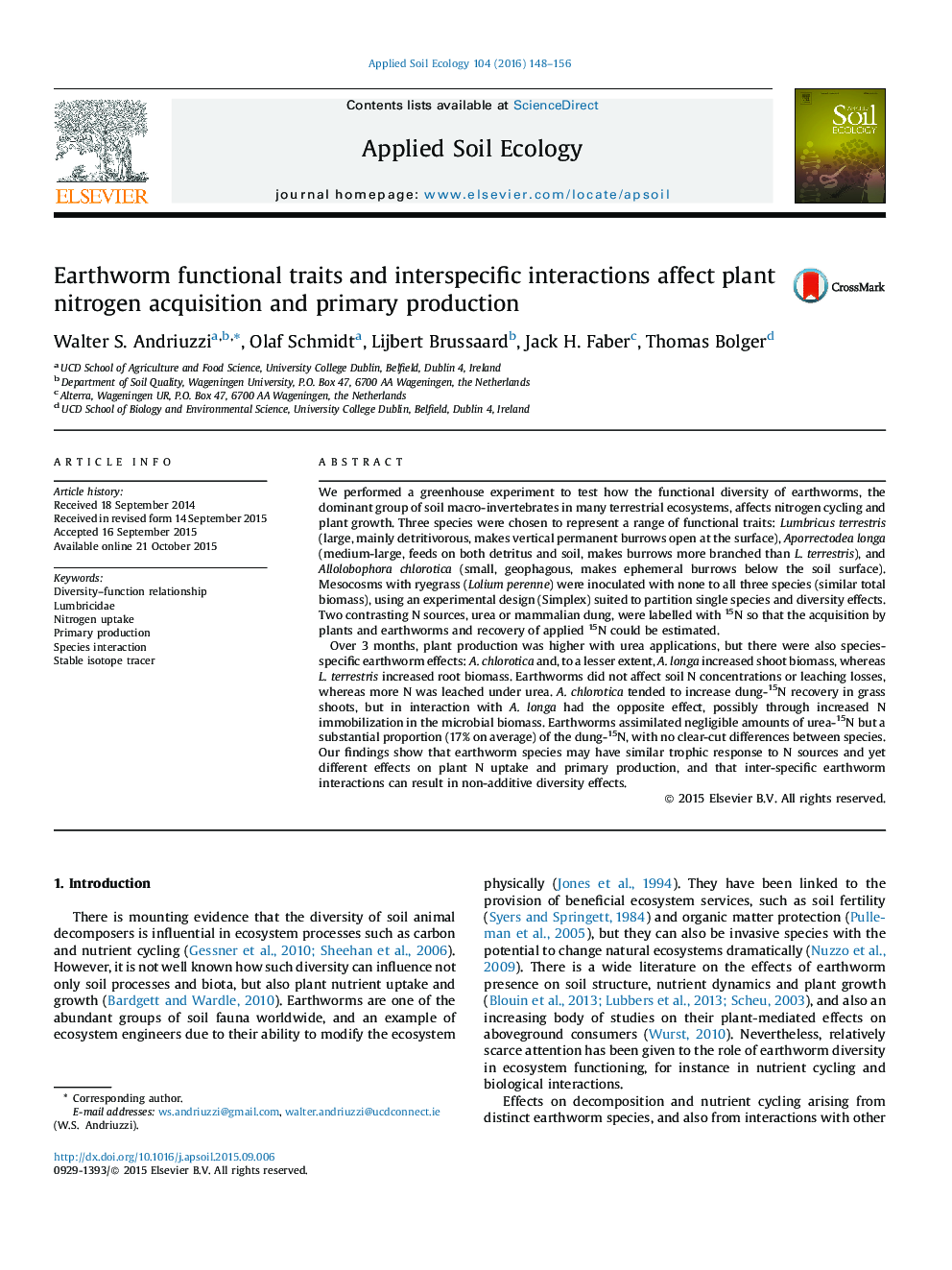| Article ID | Journal | Published Year | Pages | File Type |
|---|---|---|---|---|
| 6297559 | Applied Soil Ecology | 2016 | 9 Pages |
Abstract
Over 3 months, plant production was higher with urea applications, but there were also species-specific earthworm effects: A. chlorotica and, to a lesser extent, A. longa increased shoot biomass, whereas L. terrestris increased root biomass. Earthworms did not affect soil N concentrations or leaching losses, whereas more N was leached under urea. A. chlorotica tended to increase dung-15N recovery in grass shoots, but in interaction with A. longa had the opposite effect, possibly through increased N immobilization in the microbial biomass. Earthworms assimilated negligible amounts of urea-15N but a substantial proportion (17% on average) of the dung-15N, with no clear-cut differences between species. Our findings show that earthworm species may have similar trophic response to N sources and yet different effects on plant N uptake and primary production, and that inter-specific earthworm interactions can result in non-additive diversity effects.
Related Topics
Life Sciences
Agricultural and Biological Sciences
Ecology, Evolution, Behavior and Systematics
Authors
Walter S. Andriuzzi, Olaf Schmidt, Lijbert Brussaard, Jack H. Faber, Thomas Bolger,
